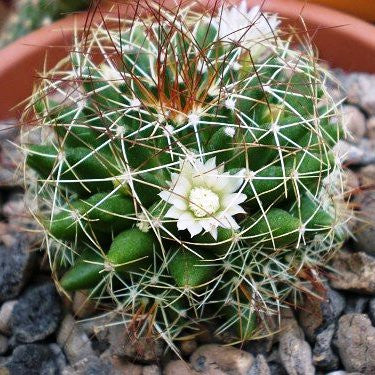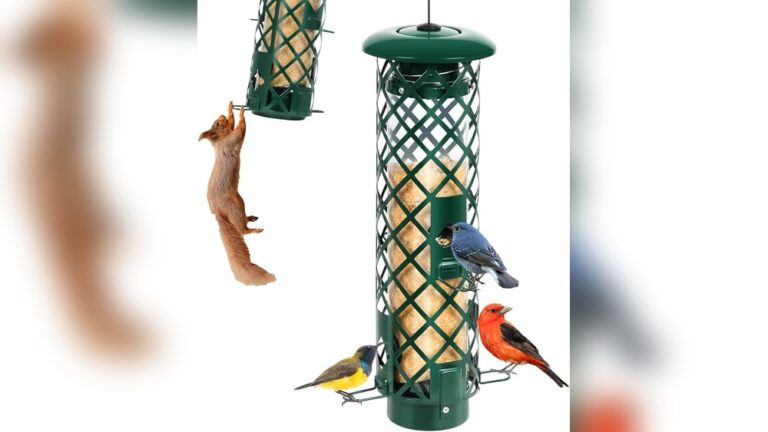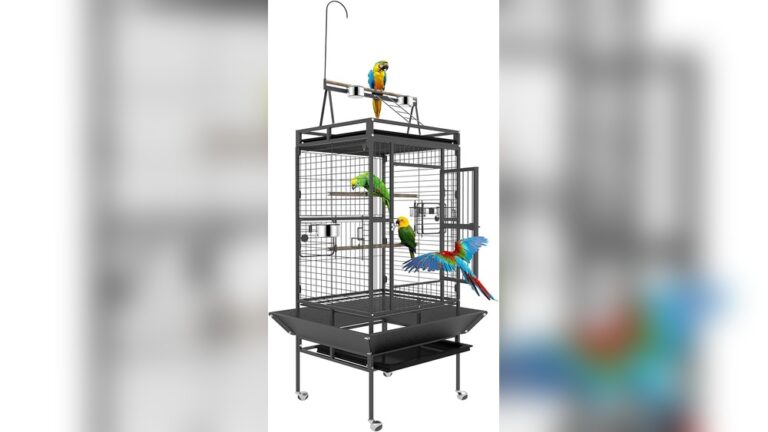Birds Nest Cactus
Are you looking for a unique plant that stands out in your collection? The Birds Nest Cactus might be just what you need.
Its unusual shape and easy care make it perfect for both beginners and experienced plant lovers. Imagine having a plant that not only adds beauty but also sparks conversations every time someone sees it. Keep reading, and you’ll discover everything you need to know to grow and care for this fascinating cactus with confidence.
Birds Nest Cactus Basics
The Birds Nest Cactus is a unique and fascinating plant. It stands out with its unusual shape and easy care. Many people grow it indoors or in gardens. Understanding its basics helps you appreciate this cactus more.
Knowing its features, habitat, and growth habits gives insight into how it lives. This knowledge also helps in keeping the plant healthy and thriving.
Physical Features
The Birds Nest Cactus has a round, nest-like shape. It looks like a tight ball made of many small spines. The spines are usually white or light yellow. This cactus does not grow tall. Instead, it stays compact and low to the ground. Its surface looks soft but is covered in fine spines.
Natural Habitat
This cactus grows in desert regions. It prefers dry, sandy soil and lots of sunlight. You can find it in parts of Mexico and the southwestern United States. The weather in these areas is hot during the day and cool at night. It survives long dry periods with little water.
Growth Patterns
The Birds Nest Cactus grows slowly over time. It spreads wider rather than taller. It often forms small clusters of several plants. This cactus does not need frequent watering. It stores water in its body to survive droughts. Its growth slows down in winter and speeds up in warmer months.

Credit: gabbarfarms.com
Care Tips
Birds Nest Cactus is a unique and attractive plant. It needs simple care to grow well. Follow these tips to keep it healthy and thriving.
Understanding its basic needs helps you provide the best environment. This cactus has specific light, water, soil, and temperature needs. Meeting these will make your plant happy and strong.
Light Requirements
Birds Nest Cactus prefers bright but indirect sunlight. Direct sun can burn its delicate surface. Place it near a window with filtered light. It can tolerate low light but grows slower.
Watering Schedule
Water the cactus sparingly. Let the soil dry out completely between waterings. Overwatering causes root rot and damages the plant. In winter, reduce watering even more.
Soil Preferences
Use well-draining soil designed for cacti or succulents. A mix of sand, perlite, and potting soil works well. Good drainage prevents water from sitting around roots.
Temperature Needs
Birds Nest Cactus thrives in warm temperatures. Ideal range is between 60°F and 80°F (15°C to 27°C). Avoid cold drafts or temperatures below 50°F (10°C). It prefers stable indoor temperatures.
Propagation Methods
Birds Nest Cactus is a unique plant that many gardeners want to grow. Propagating this cactus can be done in a few ways. Each method has its own benefits. Choosing the right one depends on your needs and resources.
Seed Propagation
Seeds are a natural way to grow Birds Nest Cactus. Start with fresh seeds from a healthy plant. Plant them in a well-draining soil mix. Keep the soil moist but not wet. Place the container in a warm spot with indirect light. Germination usually takes a few weeks. Seed propagation takes time but can produce many new plants.
Offsets And Cuttings
Offsets are small plants that grow near the base. Carefully remove these from the mother plant. Let the offsets dry for a day to form a callus. Plant them in cactus soil and water lightly. Cuttings work well too. Cut a healthy stem and let it dry for several days. Plant the cutting in soil and wait for roots to grow. This method is faster than seeds and often succeeds.
Common Issues
The Birds Nest Cactus is a hardy plant but faces some common issues. These problems can affect its health and appearance. Knowing these issues helps keep the cactus strong and beautiful.
Pests To Watch For
Small insects often attack Birds Nest Cactus. Mealybugs are common pests. They look like tiny cotton balls. These bugs suck the plant’s juice, causing damage. Spider mites also cause harm. They leave tiny webs and make the plant look dusty. Aphids may appear too. They cluster on new growth and weaken the cactus.
Disease Prevention
Fungal infections can harm the cactus. Overwatering causes root rot, a deadly disease. Good drainage helps avoid this problem. Keep the soil dry between watering. Avoid water on the cactus body. Too much moisture invites fungus and bacteria. Use clean pots and tools to prevent disease spread.
Troubleshooting Growth Problems
Slow growth or discoloration signals trouble. Lack of sunlight makes the cactus pale. Place it in a bright spot with indirect sun. Overwatering causes yellowing and soft spots. Underwatering makes the cactus shriveled. Check soil moisture regularly. Poor soil quality also limits growth. Use a well-draining cactus mix for best results.
Decorative Uses
The Birds Nest Cactus offers unique charm for decoration. Its round shape and spiky texture make it stand out. This cactus fits many spaces and styles. Small size suits tables, shelves, and windowsills. It brings a touch of nature indoors and outdoors.
Indoor Display Ideas
Place the cactus in a small pot with bright colors. Use it on desks or coffee tables to brighten rooms. Group several cacti for a mini desert theme. Combine with smooth stones or sand for a natural look. Keep near windows to get enough sunlight. Its low water need makes it easy to care for inside.
Outdoor Landscaping
Birds Nest Cactus adds texture to rock gardens. Plant it among stones or gravel beds for a desert feel. Use as border plants along walkways or garden edges. It thrives in sunny, dry spots outdoors. Protect from heavy rain or frost for best growth. This cactus adds interest without needing much care.

Credit: mybageecha.com
Interesting Facts
The Birds Nest Cactus is more than just a unique plant. It holds fascinating stories and traits. These interesting facts make it special and loved by many. Understanding these can deepen your appreciation for this cactus.
Cultural Significance
The Birds Nest Cactus has a strong place in many cultures. Some Native American tribes see it as a symbol of protection. They use it in ceremonies to bring good luck and safety. In other regions, it represents endurance and strength. This cactus often appears in art and folklore. Its shape and resilience inspire many stories and designs.
Unique Adaptations
This cactus has special features to survive harsh environments. It stores water in its thick, round body. Its spines form a nest-like pattern to protect it from animals. The shape helps shade the plant and reduce water loss. It can live in hot, dry places with little rain. These adaptations make it a strong survivor in deserts.

Credit: www.istockphoto.com
How Smart Pets Lover Can Help You with Birds Nest Cactus
Practical Learning with Your Birds Nest Cactus
Getting to know your Birds Nest Cactus beyond the basics opens up rewarding hands-on learning opportunities. As you care for this unique plant, you’ll naturally dive into propagation methods, experimenting with offsets to watch new life grow. This process not only sharpens your gardening skills but also deepens your connection to nature’s rhythms.
Dealing with common issues like pests or watering challenges encourages problem-solving and patience—valuable traits for any pet or plant enthusiast. Plus, exploring decorative uses of the cactus can spark creativity, allowing you to personalize your living space while practicing mindful care.
- Observe how light and water affect growth, linking back to care tips you’ve learned.
- Record changes and challenges, building a practical guide tailored to your environment.
- Share your experiences with fellow plant lovers to exchange insights and support.
At Smart Pets Lover, we believe every learning moment with your plants or pets tells a story worth cherishing. If you have questions or want to share your cactus journey, feel free to reach out through our contact page. Remember, nurturing a Birds Nest Cactus is as much about patience and curiosity as it is about care—and that’s a lesson anyone can appreciate.
Frequently Asked Questions
What Is A Birds Nest Cactus?
Birds Nest Cactus is a unique succulent with a rosette shape. It resembles a bird’s nest with spiny edges. This cactus is popular for indoor decoration and is easy to care for.
How Do You Care For Birds Nest Cactus?
Provide bright, indirect sunlight and well-draining soil. Water sparingly, allowing soil to dry between watering. Avoid overwatering to prevent root rot. It thrives in warm, dry conditions.
Does Birds Nest Cactus Bloom Flowers?
Yes, Birds Nest Cactus produces small, white or pinkish flowers. Blooming usually occurs in spring or early summer. Flowers appear at the center of the rosette.
Can Birds Nest Cactus Survive Indoors?
Absolutely! Birds Nest Cactus adapts well to indoor environments. Place it near a bright window for indirect sunlight. Indoor conditions help prevent overwatering and pests.
Conclusion
Birds Nest Cactus makes a great choice for any plant lover. It stays small and grows slowly, so it fits well in small spaces. This cactus needs little water and sunlight, making it easy to care for. Its unique shape adds charm to your home or garden.
With simple care, it can live for many years. Give this cactus a try to enjoy a low-maintenance, beautiful green friend. A perfect plant for beginners and experts alike.






